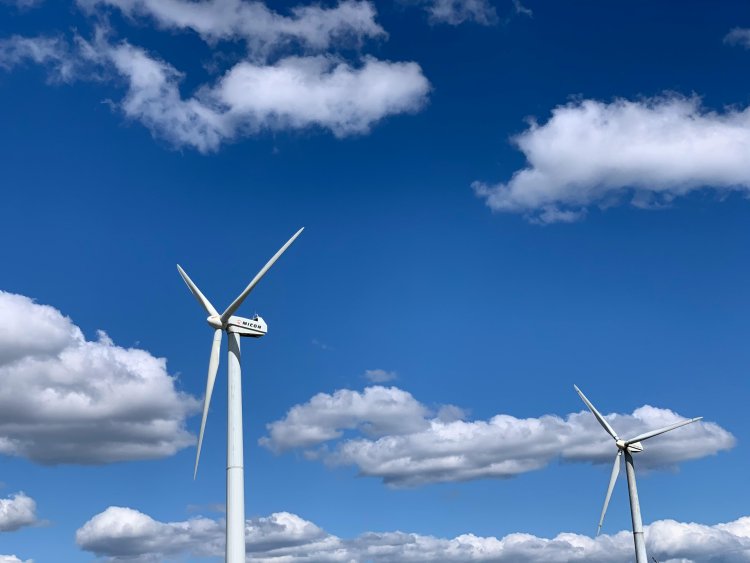What are sustainable energy solutions What are the types of sustainable energy solutions?
As the world faces the challenges of climate change and depleting fossil fuel reserves, the search for sustainable energy solutions has become paramount. Here are a variety of sustainable energy solutions and the innovations driving their adoption
What are sustainable energy solutions What are the types of sustainable energy solutions?
sustainable energy solutions
As the world faces the challenges of climate change and depleting fossil fuel reserves, the search for sustainable energy solutions has become paramount. Here are a variety of sustainable energy solutions and the innovations driving their adoption:
1. Solar energy
Photovoltaic (PV) cells – Solar panels convert sunlight into electricity using photovoltaic cells. Solar energy is abundant, renewable and can be used for both centralized grid and decentralized off-grid applications.
2. Wind Energy
Wind Turbine- Wind energy involves using the kinetic energy of the wind to generate electricity. Onshore and offshore wind farms use large turbines to convert wind energy into electrical energy. Ongoing innovations in turbine design and materials contribute to increasing efficiency and reducing environmental impact.
3. Hydroelectricity
Hydroelectric Dams – Traditional hydroelectric systems use energy from flowing water to generate electricity. Innovations include improved turbine technology fish-friendly designs and small-scale hydropower projects that have low environmental impact and can be deployed in a variety of settings.
4. Biomass Energy
Bioenergy production- Biomass obtained from organic materials like wood, agricultural residues and waste can be converted into bioenergy. Innovations include advanced biofuels, biogas production from organic waste and efficient biomass-to-energy technologies.
5. Geothermal energy
Geothermal Plants Geothermal energy uses the Earth's internal heat to produce electricity. Innovations include advanced geothermal systems that aim to expand geothermal potential in areas without traditional geothermal resources. This technology has the potential to provide continuous baseload power.
6. Tidal and wave energy
Tidal and wave devices – Tidal and wave energy systems harness the kinetic energy from ocean tides and waves. Innovations include improved designs of tidal turbines, wave energy converters and underwater kite systems. These technologies are still in their early stages but hold promise for consistent and predictable power generation.
7. Nuclear fusion
Fusion reactor – Nuclear fusion involves the combining of light atomic nuclei to release energy. While still in the experimental stage, fusion reactors aim to mimic the process that occurs in the Sun. If successfully developed, fusion could provide a virtually unlimited and clean energy source with minimal radioactive waste.
8. Energy Storage Solutions
Battery Technology – Advances in battery technology are critical for storing and managing energy from intermittent sources such as solar and wind. Lithium-ion batteries dominate the market, but innovations include solid-state battery flow batteries and other emerging technologies with higher energy density and longer lifetime.
9. Smart Grid and Energy Management
Smart Grid – Smart grids use digital technology to optimize the generation, distribution and consumption of electricity. Innovations in grid management demand response systems and real-time data analysis enhance the efficiency and reliability of energy delivery.
10. Energy Efficiency and Conservation
Energy-efficient technologies – Improving energy efficiency is a sustainable solution in itself. Innovations in building design, smart appliances and energy-efficient technologies reduce overall energy consumption, reduce demand on the grid and reduce environmental impacts.
11. Community and decentralized energy systems
Local Energy Initiatives – Communities are exploring decentralized energy systems, including microgrid community solar projects and small-scale renewable installations. These solutions increase energy flexibility, reduce transmission losses and empower local communities to have greater control over their energy sources.
12. Hydrogen as an energy carrier
Green hydrogen production – Hydrogen produced through electrolysis using renewable energy is gaining attention as a clean energy carrier. It can be used for a variety of applications including fuel cells for transportation and industrial processes.
conclusion
The transition to sustainable energy involves a combination of technological innovation policy support and changes in societal attitudes towards cleaner and more efficient energy sources. The continued development and integration of these sustainable energy solutions is essential to achieve a more environmentally friendly and resilient global energy landscape.
What's Your Reaction?




















